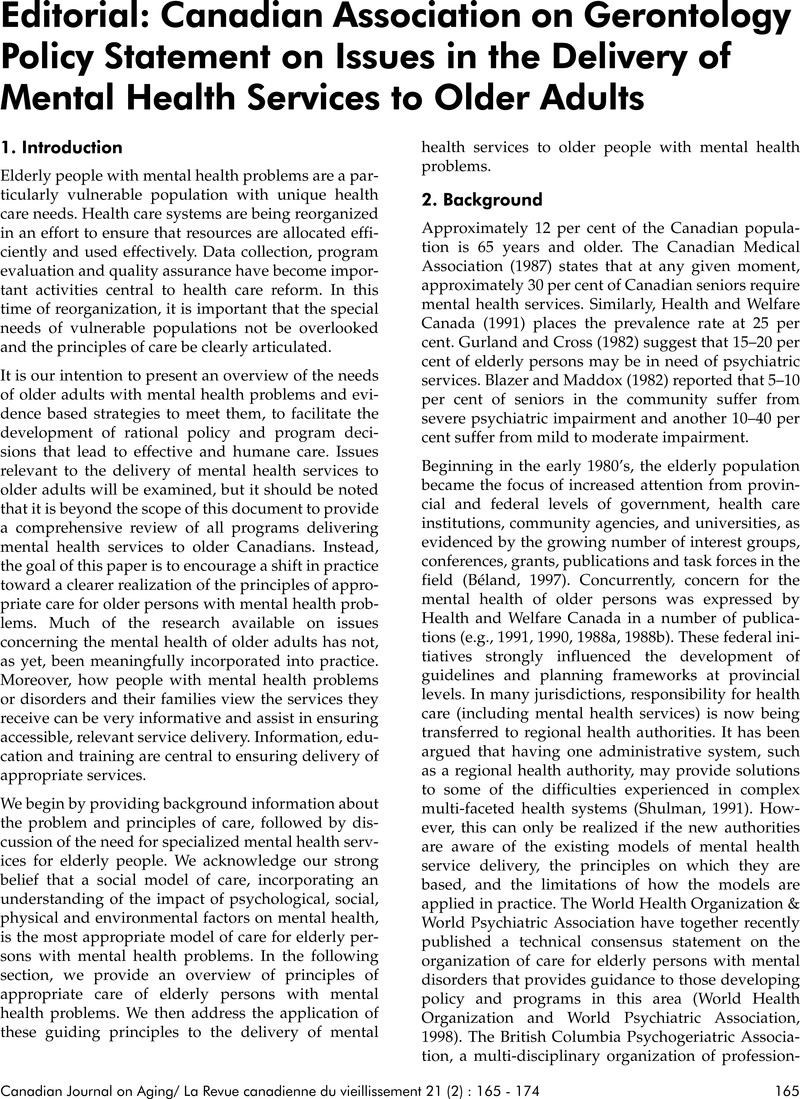Crossref Citations
This article has been cited by the following publications. This list is generated based on data provided by Crossref.
2003.
Current Awareness in Geriatric Psychiatry.
International Journal of Geriatric Psychiatry,
Vol. 18,
Issue. 1,
p.
91.
McGee, Phyllis
Tuokko, Holly
Maccourt, Penny
and
Donnelly, Martha
2004.
Factors Affecting the Mental Health of older Adults in Rural and Urban Communities: An Exploration.
Canadian Journal of Community Mental Health,
Vol. 23,
Issue. 2,
p.
117.





